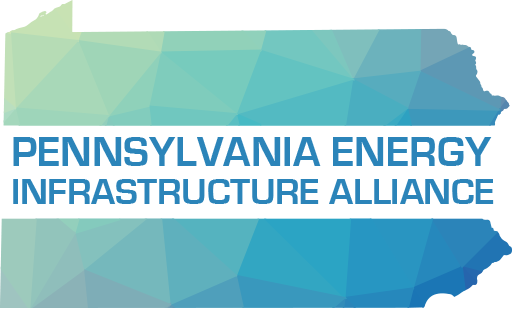I had the privilege to testify during a virtual hearing held by the Pennsylvania Department of Environmental Protection (DEP) on Wednesday, June 16 regarding a plan by the developer of Mariner East to modify its method of construction for a portion of pipeline installation in the Marsh Creek area in Upper Uwchlan Township, Chester County.
Thirty-five people signed up to testify, although not all showed. By the end of the night, 14 individuals testified in favor of the plan, recognizing the significant economic benefits and environmental protections that the modifications will bring, while 11 opposed the alterations, with many simply using the venue to rail against pipelines generally.
You can read PEIA’s release about the hearing on our blog here.
The public comment period runs through June 23. Dozens of Pennsylvania Energy Infrastructure Alliance members and partners have already submitted written remarks, and more will certainly follow after some of the testimony last night.
The economic benefits of Mariner East are clear. With an estimated $9.1 billion invested into our state’s economy and more than 57,000 construction jobs created, the Mariner East project is an economic boon and central to Pennsylvania’s energy future.
The environmental benefits of the modifications are apparent as well. A shift from horizontal directional drilling (HDD) to open cut trench installation will prevent inadvertent returns, which is what affected construction in this area, and actually minimize long-term disruption to local landowners as the project moves toward completion.
Nevertheless, opponents challenged the pipeline and the proposed construction changes. They continue to say there is no local benefit or environmental upside to Mariner East.
Let’s look at the facts …
First, electric sector-related emissions plummeted as more natural gas met our growing power demands. That has led to cleaner air across our commonwealth.
Carbon dioxide emissions tied to power generation continue to fall, with 2018-2019 emissions down 8.4 percent, according to new Environmental Protection Agency data. Indeed, these levels are 33 percent lower than 2005, despite a larger, more robust economy when shale gas development began in Appalachia. Here in Pennsylvania, volatile organic compounds tied to power generation declined 40 percent between 2005-2018 and other pollutants like sulfur oxides (SOX) and nitrogen oxide (NOX) levels dropped 93 and 81 percent respectively, according to state Department of Environmental Protection data.
Second, pipelines by far are the safest means to transport energy products, according to the U.S. Department of Transportation’s (USDOT) Pipeline Hazardous Materials Safety Administration (PHMSA).
At this moment, Pennsylvania’s pipeline infrastructure cannot adequately support the demand or potential supply, which is problematic for industries that rely on these products, consumers that need them to heat their homes, and Pennsylvania communities that would be negatively impacted by less safe transportation means like railroads and trucks. According to PHMSA, 750 tanker trucks or 75 2,000-barrel rail cars would be needed daily to fulfill the transport capacity of a “modest pipeline.” That’s more traffic, more risk and more emissions — and emissions clearly are an environmental issue.
Third, the notion that the product in Mariner East isn’t used locally is false.
Competitive Power Ventures’ gas-fired power plant in Cambria County, Pa., has been adapted to use ethane in its combustion mix. The Fairview Energy Center successfully completed ethane testing last year and is now ready for commercial use. CPV called Fairview the only power plant of its scale globally to have ethane blending with natural gas. Where does the Fairview Energy Center get its ethane? From Mariner East, which delivers gas to the power plant. I’ve seen the plant firsthand.
Beyond CPV, there are offshoots along the line for propane offtakes, including one in Berks County, for example. Ferro Fuel Oil Inc. in Boothwyn relies on the safe, efficient, affordable transit of these clean, domestic energy resources, which are delivered to the Marcus Hook Industrial Complex in Delaware County. But all of us rely on this supply chain.
While more than 14 million American families rely on propane for home heat, few appreciate just how important this fuel is to putting food on dining room tables in homes nationwide, as propane is central to agricultural production. That’s only part of the story, though. Hot water, clothes dryers, fireplaces, gas grills, cooking stoves, space heaters and generators are a few more of the growing uses for propane gas.
Finally, opponents talked about kayaking Marsh Creek Lake but failed to acknowledge that the feedstock for that kayak was cracked natural gas. The same with the paddle that propelled them and the water bottle that hydrated them.
Opponents may not like, or they simply don’t want to admit it, but petrochemicals are used in a bewildering array of household products: Carpeting. Crayons. Detergents. Dyes. Fertilizers. Milk jugs. Pantyhose. Perfume.
And let’s not forget the life-sustaining products American energy produces. From ventilators, protective masks, and medicines to reliable heat and power for hospitals and other health-care facilities, our domestic oil and natural gas production and processing provided the tools necessary to fight COVID-19 and keep us healthy and safe day in, day out.
Maybe that’s why more people turned out in favor of the Mariner East project than those who show up to oppose it.
